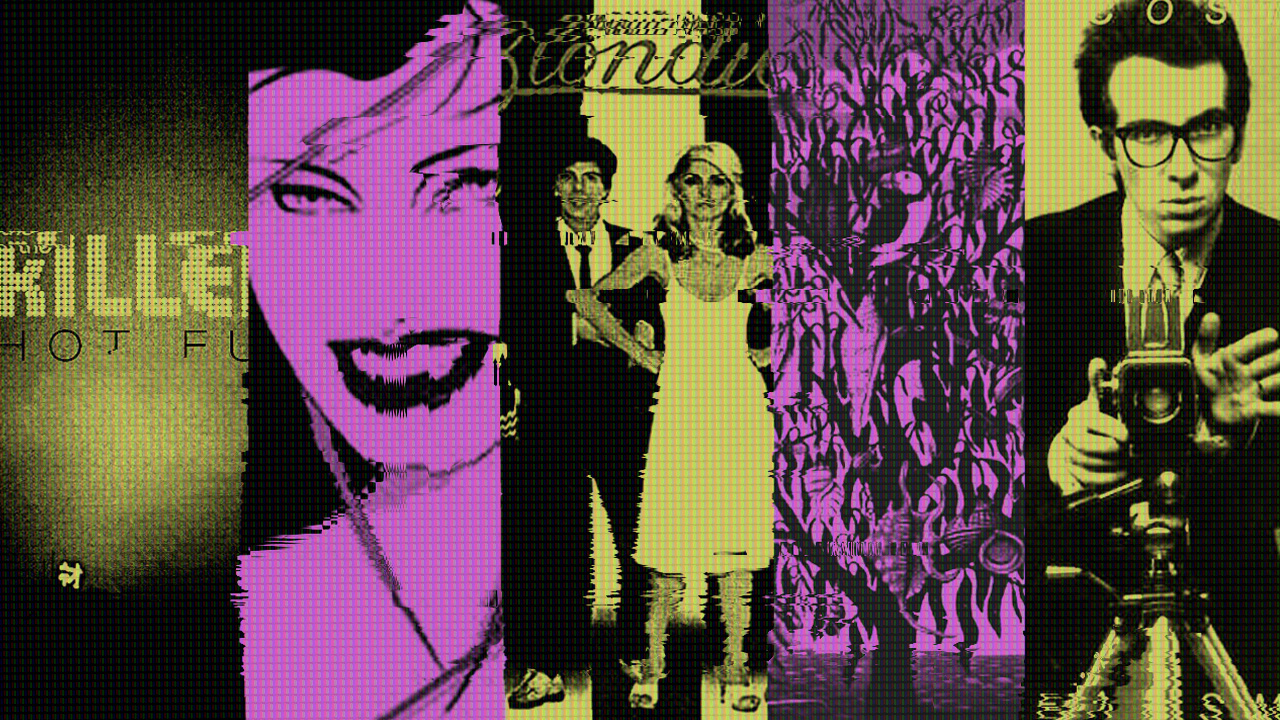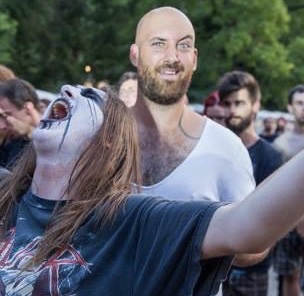While punk rock was a high octane, teeth-gnashing attack on rock's establishment and post-punk was its artsy, experimental and po-faced cousin, to many people new wave was always the acceptable face of the punk movement.
More inspired by the melodicism of David Bowie, Sparks and Roxy Music, less overtly political, more lighthearted, less scabrous, more... well... pop, it’s really no surprise that many new wave bands far outstripped their pure punk peers in terms of commercial success. By the time the mid-80s rolled around, new wave artists had become the establishment that punk had sought to destroy. Ironic, sure, but worth it: this is a genre that gave us some of the most memorable pop hits of all time.
From escaping punk's shadow to dominating MTV and beyond, here is the story of new wave in five essential albums.

Elvis Costello & The Attractions – This Year’s Model (1978)
Elvis Costello was unquestionably part of the punk movement, but where the majority of his peers enthusiastically rejected the past, the Londoner was more than happy to allow his love of Buddy Holly, The Beatles or Elton John to shine through in his music. His 1977 debut album My Aim is True is an incredibly important document, but a year later he found a new backing band in The Attractions and released a record that perfectly balanced the fury of punk rock with classic pop songwriting nous – something that, at the time, was a pretty radical idea. Costello inspired an entire generation of British pop stars, those that followed his example saw that they didn’t have to shy away from attempting to write ambitious, meaningful, universal music. Plus, there are some fantastic songs on This Year’s Model; Pump It Up, (I Don’t Want To Go To) Chelsea, This Year’s Girl, No Action... we could go on, but all of them mix Costello’s often cynical and disillusioned outlook with some inescapable melodies, sugaring the bitterest of pills.
Blondie – Parallel Lines (1978)
If Elvis Costello brought songwriting nous and an innate knack for moulding great melodies into a punk framework, Blondie gave us straight up, undeniable star power. Debbie Harry had model looks, charisma by the bucketload, and a voice full of energy, personality and swagger that was impossible not to be drawn in by. The New York band's third studio album saw them fully transition from a collective capable of writing catchy, scratchy, power-punk nuggets into one who could effortlessly nail massive, hook-filled radio pop-rock anthems. Parallel Lines is full of some of Blondie’s most well-known songs; Hanging On The Telephone, One Way Or Another and I’m Gonna Love You Too are all enduring moments of bubblegum brilliance, but it’s the sleek, classy disco of Heart Of Glass that showed just how far into the pure pop realm new wave was willing to go. A number one single in the UK and US that sold over a million copies in both territories, it gave new wave its first genuine superstar act.
Duran Duran – Rio (1982)
The 'Second British Invasion' of the early 80s arguably represents the commercial peak for new wave as a genre. It’s at this point where differentiating new wave and pure pop music becomes almost impossible, with every trace of punk rock now eradicated completely from the music. What happened during that time was something of a lightning in a bottle moment: a group of flamboyant Brits playing glammy, synthy modern pop, springing up just as MTV – the perfect medium to showcase their qualities – was born. The start of the invasion was probably The Police’s Roxanne charting in the US in 1979, and soon The Eurhythmics, ABC, Flock Of Seagulls, Spandau Ballet, Tears For Fears and The Human League followed them.
Duran Duran were unquestionably the biggest stars of the movement. The Fab Five’s second album Rio came to define everything about the scene at that time – decadence, glamour, excess, indulgence and world class tunes. Of course, the title-track, Save A Prayer and Hungry Like The Wolf are as well-known as any songs you care to mention, but Hold Back The Rain and The Chauffeur showed they still had a touch of threat and darkness around them. It remains the gold standard for glamorous arena rock escapism.
Talk Talk – Spirit Of Eden (1988)
In their early days, Mark Hollis’ Talk Talk project were almost dismissed as purely another synth-heavy pop act from The Second British Invasion. Much of this was purely to do with financial restrictions, Hollis unable to afford the full band necessary to create his compositions the way he heard them in his head.
1986’s superb The Colour Of Spring is an album caught between early, new wave Talk Talk and the freewheeling creative force the band would become on their final two albums – and, arguably, it might be easier to justify that record here. But Spirit Of Eden is such a landmark that it'd be absurd to leave it out, and if you're going to listen to one Talk Talk album, this would have to be the one. After new wave became a bloated commercial behemoth, Spirit Of Eden wilfully ignored the idea of singles, choruses, sometimes even songs in any kind of conventional sense, and instead concentrated on jazz-inflected improvisation and long passages of ambient, spacious, quiet intensity. The result is a record that was ignored and often derided at the time (as we now know, it was because it was so far ahead of the curve), but went on to help invent an entirely new genre in post-rock, remaining one of the most emotionally moving, captivating, poignant and beautiful records ever made.
The Killers – Hot Fuss (2004)
Since the glory days of new wave drifted firmly into the past, there have been more than a few nostalgic callbacks to its 1980s peak: Elastica and Pulp both referenced it here and there in amongst their Britpop anthems, while artists such as LCD Soundsystem, Hot Chip and Hurts spent much of the 2000s trying to make danceable art-pop from an indie background. Even pop-punk megastars Paramore have embraced New Order, The Bangles, Talking Heads and more on their last two albums, while the likes of Working Men’s Club have been recently lauded for creating icy, detached, synth-pop tunes.
But if one 21st century artist were able to take the credit for a resurgence in the principles of new wave, while also having a similar level of commercial success, it would be Las Vegas quartet The Killers. Their debut album Hot Fuss came at a time when stripped-back garage rock was the zeitgeist, but they brought back monster hooks, pure anthemic pop, excessive synth, disco bass and, in vocalist Brandon Flowers, a camply flamboyant, strutting frontman. It worked, too: Hot Fuss has sold over 7 million albums worldwide and is full of some of the most instantly recognisable songs of the era. Sure, you’re sick of Mr. Brightside, but On Top, Jenny Was A Friend Of Mine, All These Things I’ve Done, Believe Me Natalie and Somebody Told Me are all gargantuan. They’d all but abandon the style immediately, but, for one album, The Killers were the greatest pop band on the planet.

